IndiaWilds Newsletter Vol. 7 Issue XI
Holy Cows: Old age home for cows
The cow today dominates the political discourse in India. Though one thought that the emotional pitch around cow will come down after the Bihar elections, it still continues. The question now infront of us is whether this energy can be channelised for a positive impact.
This domestic animal impacts and has the potential to impact positively the wildlife conservation landscape in India.
In India though the cow is protected by law in many states, killing of bulls and bullocks are allowed if they are unfit for work or breeding. In the Article 48 of the Directive Principles of the Constitution of India cow is given special protection for Scientific Agriculture and also for preserving and improving the breed. However, the preservation of various indigenous breeds of cattle has never been taken up. Instead, the focus is on improving the quantity of milk generated by creating hybrids commonly known as “jersey” cows.
There are more than half a crore stray cattle in India (cattle census 2012). At one point of time there were enough grazing lands for these cattle. However, in the cities and towns there are hardly any green spaces for grazing and these stray cattle are trying to eke out a living by roaming in the streets looking for waste paper and edible items thrown by people. In the process, they have become a traffic hazard, causing accidents.

A cow searching for food in a garbage bin
Around a decade ago, in a BBC radio interview about BPOs(Business Process Outsourcing) companies, the interviewee was quoted as saying these buildings will grow bigger, roads will become wider but there will still be cows in the streets. This cynical view of the cow being omnipresent in our lives, albeit in a pitiable condition is likely to continue if no concerted action is taken.
Pandit Jawaharlal Nehru in the foreword to the book The Wild Life of India by E. P. Gee wrote “In India, perhaps even more than in other countries, there is this difference between precept and practice. In no country is life valued in theory so much as in India, and many people would even hesitate to destroy the meanest or the most harmful of animals. But in practice we ignore the animal world. We grow excited about the protection of the cow. The cow is one of the treasures of India and should be protected. But we imagine that we have done our duty by passing some legislation. This results not in the protection of the cow but in much harm to it as well as to human beings. Cattle are let loose and become wild and become a danger not only to crops but to human beings. They deteriorate and the very purpose for which we value the cow is defeated”.
So it is time for us to think of ways to ensure that the cattle let loose by owners and roaming around the streets are handled in a humane manner.
At present some State Governments give money to Goshala’s to have keep cattle. However, the amount of money is not sufficient and hence the cows are neglected. We can create Natural Goshala’s or Old Age Homes for cows. These can come up in the fallow lands owned by the Government departments primarily the Revenue department. Large areas of anything between 50 to 200 acres or more bordering forests and having water bodies or ponds can be wire fenced and made inviolate for people. The stray cattle can then be transferred to these enclosures. The cattle can then roam around freely without losing their lives in accidents or without being beaten by people for eating their crops or flowering plants in gardens. They can live on the vegetation in these areas and die in peace.
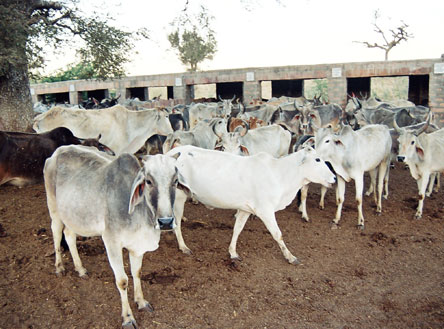
Goshala
Since the cattle would be confined to the area, the cow dung will also be dropped in the area. It would act as manure and some of the trees and vegetation will become bigger and better. The manure will also help in regenerating the native vegetation. When these cattle die their carcass would help in feeding the jackals, hyaenas and possibly some leopards. Since these cattle would not be injected with diclofenac which kills the vultures, it would also help in brining back the vulture population from the brink. These days people even sell the dead cattle and their bones and flesh shredded for chicken and shrimp feed. With these group of cattle which will be in the large wire fenced areas, they will be feral for all practical purposes and when they die their bones, flesh and hide will not be taken away for processing into animal feed. So it will indeed help our scavengers and help sustaining their population as we have virtually decimated the wild herbivores by poaching.
Without These predators will also not enter into the villages and towns in search of food and create panic among people. Even today there are many places in India where leopards and other predators are seen close to villages and living in peace. With these areas being made inviolate to people along with their cattle, other herbivores like wild boars etc will also come to these places. Over a period of time these fallow lands will have good greenery and it will be a carbon positive move.
I have come across many vigilant groups who stop transport of cattle as they feel cattle are being destined for slaughter. They beat up the drivers and release the cattle. Unfortunately, for the cattle it is like between the devil and the deep sea. On one hand they don’t have food and had to scavenge the trash on the streets, consume polythene bags and aluminium foils along with food and die a painful death and on the other hand there is the prospect of quick death in slaughterhouses. While talking with some of these groups, I was told that some of them genuinely believe in animal welfare and collect donations from people to feed birds like peacocks, pigeons etc close to some temples. So creating wire fenced areas to send draught cattle and street cattle would be a feasible move as these groups should readily help in transporting them as they will feel that cow slaughter will thus be averted.
This move will ofcourse have its detractors as today the real estate lobby despite having unsold inventory of more than six years have their eye on any area lying idle.
By this move, the Government will not need to pay for the upkeep of the stray cattle. They just need to spend money for the wire fencing and provide the area for this purpose in perpetuity.
The cows will atleast not feed on plastics and other trash in the cities and die a painful death after consuming those plastics. Apart from being a humane move, it will also make our roads safe and give a positive image about India. Whether the people making noise about cow protection will move beyond empty rhetoric and actually act in creating natural goshalas or old age home for cows is anybody’s guess.
Chennai Drowned:
“Those who cannot remember the past are condemned to repeat it” wrote Santayana in The Life of Reason in 1905.
His words are proving prophetic in India today.
On 26th July 2005 Mumbai faced its worst flooding in its recorded history. Every year life in Mumbai gets disrupted during the rains, however, 2005 was different. On that fateful day the city got 944mm of rainfall, equal to the average rainfall of an entire year. The city was caught napping. It had allowed rampant destruction of mangroves along the Mithi river, Mahim Creek as well as on the Thane Creeks for construction of commercial and residential complexes. Along with clogged drains now the water had nowhere to go. Tomes were written about it but quickly forgotten.
A month later on 29th August, 2005, New Orleans was flooded as Hurricane Katrina hit the city. With close to 50% of the city below mean sea level, the storm surge led to 80% of the city under water with some places even having 15 feet of water. Fortunately, about 80 to 90% of the city was evacuated before the storm. However, many parts of the city remained under water for a long time. When a city is below mean sea level and there is flooding, it is virtually next to impossible to pump back the water. However, not many learnt that you need to take cognisance of natures rules while building a city.
The year 2005 ended with flooding a few months later in the eastern coast in Chennai. On 03, December 2005, in Chennai within a period of 24 hours, 234 mm rainfall was recorded at the city centre in Nungambakkam, the Chennai airport area received 282mm rainfall. At Tambaram, the suburb at South of Chennai got 314mm rainfall. Predictably the lakes overflowed, choked drains couldn’t take the water, nor the two rivers Cooum and Adyar could drain out the water as the floodplains of these two rivers were encroached upon. Many parts of the city was cut off. In a water starved city this was considered as an aberration and was quickly forgotten.
Ten years on, Chennai has grown bigger. There have been much more investments into the city and its suburbs. Various wetlands have been encroached, debris deposited to fill the wetlands. The wetlands in Tamil Nadu are referred as peramboke lands ie wastelands. The real estate mafia didn’t leave a single wetland unconstructed. The Government too doesn’t realise the importance of wetlands. So the huge Inter-state bus terminus at Koyambedu in Chennai was constructed in a wetland. In 2005, behind the bus terminus, I had found winter migrants. Later, the wetlands were completely reclaimed. A part of the Airport too is built on the Adyar river. Though the administration took some measures in demolishing a few walls and hostels of colleges that had come up in the river bed, a majority of the so called development is unscientific and is on wetlands. So when it rains, flooding is the inevitable consequence. Governments make themselves show as efficient by announcing relief measures. The TN Govt. estimated that the damage is to the tune of 8481 crores and demanded 2000 crores as flood relief from the Central Government. Since there is a State election probably next year, the Central Govt. promptly announced 940 crores of rupees as relief.

Wetland near Chennai
Unfortunately, the core problem remains unattended.
In our quest for growth, we are concretising wetlands. Most of these wetlands used to be fed by seasonal streams. Unrestrained dumping of sewage turned these into gutters, so people only have contempt rather than appreciation for the use of these streams and wetlands. Many SEZs, industries, colleges and residential areas have come up in the wetlands around Chennai. Where I used to see flocks of migratory birds during winter and a solitary jackal at times, today there are housing societies or industries. During my previous stint with an MNC, in a meeting with the Govt. we were suggested that land was available behind our boundary if we choose to fill the seasonal stream. I had strongly said no, however, there are other industries who grab such an opportunity.
To add to this, illegal slums come up in the low lying areas. These slums are inhabited by people who come to the city in search of jobs and work as cooks, drivers, helpers, workers in industry, hawkers etc. They are the first to bear the brunt of flooding and diseases that follow water logging. They are the dark underbelly of the Shining India. Unfortunately, our growth is happening in a haphazard manner. Big cities are growing bigger and bigger. The new Government at centre was quick to abolish the Planning Commission but the old ways of lopsided growth continues. This results in highrise apartments everywhere followed by such slums. The Government then turns a blind eye to the environmental violations of builders and industries and often regularise those.
The natural drainage mechanism has been destroyed as our greed has overridden our common sense. We know that when you clog your kitchen sink and the tap is open, the water overflows. Or when you shut the bathtub and open the water tap, the bathroom overflows. So why not use this basic common sense for town and city planning?
It is not just in India that there is higher rainfall. Climate change has become a reality around the world. Qatar, a desert country, has got its heaviest rainfall this month and it led to heavy flooding of the roads. Many cars were completely submerged in the underpasses. The US Embassy in Qatar was closed and many people had to be rescued. Similarly in the neighbouring desert country of Saudi Arabia schools and offices were closed due to flooding. The authorities who were unprepared for this kind of eventuality were forced to use tankers to pump out the water. However, climate change has resulted in unpredictable weather conditions and it will be an uphill battle for the civic authorities.
We read that the Indus Valley Civilisation at Harappa and Mohenjo daro had meticulously planned cities. It is a matter of shame that even after more than 4000 years our city planning is unscientific. Climate change led to the fall of Harappa around 4200 years ago as annual monsoon rains stopped for 200 years.
With the sea levels going to rise, low lying areas like Chennai, Kolkata and Mumbai would be the first to see significant flooding. History is repeating itself and these are the early warnings. Hope we wake up from our stupor.
Surrender LPG subsidy a Climate Action?
The Hon’ble Environment minister has said that the Government’s plan asking people to voluntarily surrender their LPG subsidies is a huge climate action.
The Minister says that with some people listening to the Government’s call and voluntarily giving up their LPG subsidies, there is a bigger pool of money which can be given to more houses as LPG subsidies. He said that 6325 families dependent on firewood have been provided with LPG connection. He considers this as a positive action towards climate change. Unfortunately this is stretching the truth way too far.
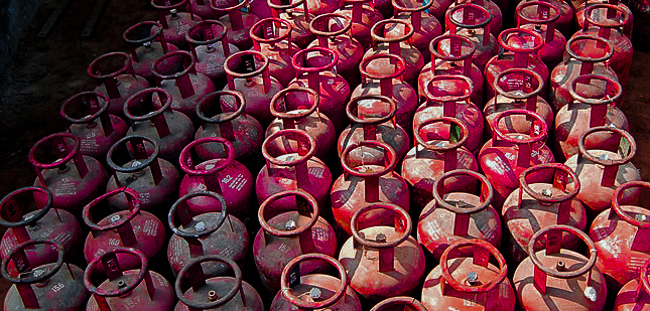
LPG cylinders
There have been many efforts throughout the country by NGOs to provide LPG connections to people living in the fringe of forests and housewives prefer the gas stoves over the traditional smoky wooden stoves. It does help in reducing the firewood collection from the forests. However, the Government hasn’t taken any massive effort to really make a difference by completely stopping the firewood collection. Hence the hankering for credits and linking it to climate change is certainly a laughable matter.
The Government is not focusing on the use of subsidised LPG cylinders for commercial purposes. The cylinders for commercial customers are costlier and hence they want to use the LPG cylinders meant for domestic consumption. If the Government can ensure that the subsidies domestic LPG cylinders are not used for commercial purposes then the overall cost to the Government would reduce. Today piped gas has become a reality in many cities. The Government has to push for converting all domestic connections to piped gas, so that the overall cost to the Government will reduce.
The call to give up LPG subsidy is a result of the ballooning subsidy bill. The Government wants to reduce its fiscal deficit by reducing the subsidies. So it can’t even spend money on necessary things. Hence, reducing subsidies which are unnecessary should be the focus of this Government. Unfortunately, the Government doesn’t have the will to do so. For example, the subsidy on fertilisers is massive. Every year it keeps on growing. The fertiliser lobby is pretty strong and ensures that the Government keeps on giving subsidies. It is a well known fact that due to the excessive use of chemical fertilisers and pesticides the soil as well as the ground water and fresh water sources are getting polluted. Even in number of states people are dying due to disease. Farmers are ruined and committing suicide. However, the subsidy burden keeps on increasing.
The Narendra Modi Government had made some noises about organic farming. It is well known that organic farming doesn’t lead to chemical residues in the vegetables and fruits and these days even fetches higher prices. Ofcourse the produce is put through strict checks and any fields should not have used chemical fertilisers for last 12 years to be branded as “organic”.
The Government can easily announce reduction of chemical subsidies and either partially or fully divert those to promote organic farming. Unfortunately, the political parties are hand in glove with these fertiliser and pesticide manufacturers and hence we shouldn’t expect real action on this front. So may be till some real concrete action happens on the ground, these kind of “positive spin” to routine events will continue.
Book Review
Wild Cats of the World
By: Mel Sunquist and Fiona Sunquist
Do you know what is Jaguarundi? Have you ever heard about Oncilla, Kodkod and Manul? These and other species of wild felids totalling 36 have been covered in the book Wild Cats of the World. Read further by clicking on the below link –
http://www.indiawilds.com/diary/wild-cats-of-the-world/

Book review of Wild cats of the world
Conservation News:
Backdoor entry for GM mustard?
The Modi Government seems to be embracing Genetically Modified (GM) food crops and soon we may start consuming it without knowing.
It has come to light that GM mustard trials have been conducted in a hush-hush manner and the details are being hidden from people of this country by the Genetic Engineering Appraisal Committee (GEAC). A 2008 Supreme Court ruling clearly mentions that the details of the trials have to be known to people before the approval for commercial production runs are given.
In 2010 following a huge hue and cry by people, scientists, activists the plans for Bt Brinjal was shelved. There has been scientific studies regarding the potential of crop to wild hybridisation in egg plant (Davidar et al. 2015, American Journal of Botany). Unfortunately, it appears that the Genetic Trials are being conducted primarily from a narrow commercial concern which will benefit a few. Even RSS, the parent body of the ruling party, was against introduction of GM food Crops. However, the Government seems to be putting in all its efforts behind this the reason for which remains unknown.
Mumbai Trans Harbour Link to kill Flamingo Habitat
The proposed Mumbai Trans Harbour Link (MTHL) project which is to link Nhava Sheva in Raigad district with Sewri in Mumbai will adversely affect the mangroves in the area and will impact the flamingos that visit Sewri every year. According to the project proponents about 47 hectares of mangrove forests have to be sacrificed. Taking congnisance of this issue, on 24th November the MoEF&CC (Ministry of Environment Forests and Climate Change) has asked the MMRDA (Mumbai Metropolitan Regional Development Authority) to get this project cleared from the Maharashtra State Wildlife Board.
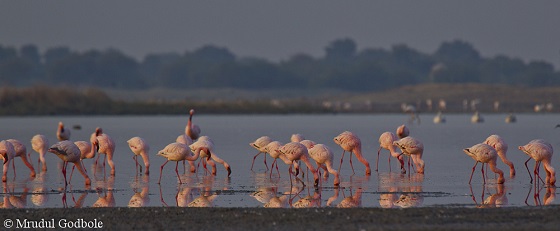
Flamingos
Though MMRDA has been requested to change the alignment, they are adamant in not changing the alignment. Sources say that they fear cost escalation if they change the alignment. Flamingos prefer to feed and rest farther from the bridge and traffic as can be seen in Thane and Vashi. They are comfortable if the traditional fishing boats come close. However, the moment motor boats come about 100m they start flying away. It would not be a wise move to further fragment their habitat by constructing the Nhava Sheva to Sewri Mumbai Trans Harbour link. The construction, deposition of debris, noise will act as a death knell for the flamingos. Furthermore, one can plant mangroves, however, one cannot create a forest as there are very complex ecological interactions between various species in these forests and to understand and replicate it in a new place is simply to impossible. Given the focus on greenlighting infrastructure projects by this Government, one won’t be surprised if the Mumbai Trans Harbour Link project gets the greenlight.
No GIB eggs for Gujarat
Two years ago Supreme Court had asked Gujarat to relocate some of its Asiatic lions to Madhya Pradesh — it is still not done. Gujarat Govt. has been vehemently protesting the order to relocate a few lions to Madhya Pradesh. Now Rajasthan is refusing to send eggs of the critically endangered Great Indian Bustard (GIB) to Kutch for breeding. The site was chosen in Kutch because of proximity to the sea coast and hence moisture, lower temperature and vegetation throughout the year so that potential of egg laying is maximum.
The Wildlife Institute of India (WII) in collaboration with the Gujarat, Rajasthan and Maharashtra forest departments had planed for conservation breeding programme by collecting eggs from the wild and transporting these to Kutch, to build a breeding population and subsequently release captive-bred birds.
Chief Minister Vasundhara Raje is supposed to have instructed Rajasthan wildlife officials that no GIB eggs were to be shared with Gujarat. Instead, the state forest department has been asked to request the Centre for a breeding and research centre for Rajasthan’s state bird near Jaisalmer in the Desert National Park (DNP).
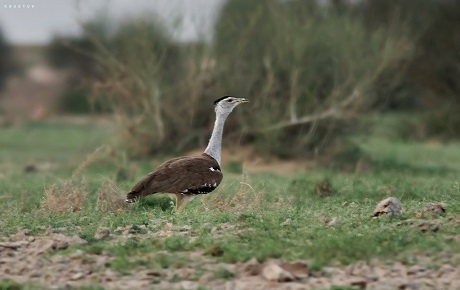
Great Indian Bustard Courtesy – Kaustav Chatterjee
The Centre has sanctioned Rs 35 crore for five years under the Compensatory Afforestation Fund Management and Planning Authority (CAMPA) for the project.
The GIB is critically endangered with less than 200 remaining in the wild, mostly in Rajasthan.
The rationale behind sending eggs to hatch in Kutch is being questioned as nearly 90% of the birds are in Rajasthan. The grasslands of Kutch used to have Great Indian Bustards, however their sightings have become increasingly rare. It is obvious that Gujarat Government has failed in preserving this species.
On the other hand, Rajasthan too hasn’t done great as the Great Indian Bustard is now found only in a few areas, having become locally extinct in much of its former range.
Unfortunately, State Government are now increasingly becoming narrow minded in trying to keep a species in their state and not collaborating with each other to reintroduce the species in its former range. If the health of the species would have been given importance then Gujarat wouldn’t have had a problem in sending lions to Madhya Pradesh and Rajasthan wouldn’t have problem in sending GIB eggs to Kutch. Interestingly Gujarat, Rajasthan and Madhya Pradesh are ruled by the same party. I hope GIB doesn’t lose out in the games people play.
8 More birds added from India to IUCN Red List:
IUCN has added the eight bird speices from India in the Red List of threatened species for 2015. The following are the eight species added to the list of threaened:
– The Northern Lapwing
– Red Knot
– Curlew Sandpiper
– Eurasian Oystercatcher
– Bar-Tailed Godwit.
– Horned Grebe (uplisted from least concerned to vulnerable)
– Common Pochard (uplisted from least concerned to vulnerable) and
– Steppe Eagle
Total number of threatened bird species in India have reached to 180 from 173. This show the increased threat to their grasslands and wetlands habitat.
The European Roller was downlisted from near threatened to least concerned.

Common Pochard
The very fact that a bird with the name common ie “Common Pochard” is now becoming uncommon should be a matter of concern. At one point of time, in India naturally occurring water bodies were every where. In places where waterbodies were not present, Rajas and Maharajas used to construct ponds and waterbodies to act as water storage. Those use to act in recharging the ground water. There were also ample grasslands and forests and birds were numerous. They were so numerous that the British used to indiscriminately kill thousands of birds in shoots. Today shooting continues, albeit surreptitiously. However, the major threat is habitat destruction. The real estate mafia is always on the look out for filling up wetlands and constructing on it. Those moves are passed off as development and growth oriented. So we have reached a point that common species are on the verge of extinction. It is time we woke up, else, the new generation would not get the pleasure of hearing bird songs.
IndiaWilds App for Android Mobile
In India most of the internet penetration is happening through mobile phones. And the existing users who have access to desktops and laptops are becoming much more mobile then they used to be a few years ago. So to raise awareness and reach out to more people we need to adapt ourselves and make IndiaWilds easily accessed through a mobile phone using android OS.
We have created a mobile phone app so that people can access IndiaWilds anytime, anywhere without being tied to a computer. No need to type. One can access at the click of a button.
We have developed this app through Business Compass LLC a company based in Randolph, New Jersey, United States so that we create a good app.
Awareness is the first step before a person can become a champion of wildlife. I hope this will help us in reaching out to more people to raise awareness and make a real impact on the conservation landscape. If you have an android device then please download the app from this link:
https://play.google.com/store/apps/details?id=com.businesscompassllc.indiawilds
Equipment Discussions
Canon launches XA35 and XA30 Camcorders with Built-in Wi-Fi® Capability
Canon has launched two HD Camcorders with 20x Optical Zoom lens.
Following are the Salient Features
Sensor: CMOS, 1/2.84”
Resolution: Full HD ie. 1920×1080 at 24p and 60p
Zoom lens: 20x ie. 26.8mm to 576mm
DIGIC DV4 Image Processor
Buy: http://www.bhphotovideo.com/c/buy/Ca…DFF/d10-v1-t12

Canon XA30 Camcorder
Stabilisation: Canon has included Intelligent Optical Image Stabilization with powered and dynamic modes and auto on/off mode. The Dynamic IS helps in improving the translational IS i.e. up and down/left and right movements, including roll axis correction (tilting/rocking of the camera forward and back), horizontal roll correction and vertical roll correction for a total of five-axis correction when shooting on the wide end of the lens.
The Macro IS Corrects angular and shift-type shake in wide-angle shots.
It also has a Powered IS mode for correcting low-frequency shake when zoomed in to longer focal lengths.
Improve low light ability: HD CMOS PRO image sensor with low-luminance noise of +3dB for improved low-light performance
Recording media: Dual SD card slots
Codec: AVCHD (28Mbps) and MP4 (35Mbps). The XA35 has an HD/SD-SDI output (XA35 only) to feed video directly to a microwave van, satellite uplink, or other TV transmission system.

Canon Camcorder XA35
Expanded Dynamic range: The Canon XA 35 and XA30 feature Wide DR mode where one can get a dynamic range up to 600 percent compared to the 300 percent on the predecessor Canon XA25/XA20 camcorder models.
LCD: 3.5-inch, 1.23 million-dot OLED touch-panel display and 10,000:1 contrast ratio Electronic Viewfinder with controllable iris.
New Highlight Priority Mode: This mode helps in capturing visual characteristics which can easily be lost due to video compression, so that realistic depiction of blue skies and clouds, the translucence of water and the luster of metals etc is achieved.
Qualities like Peaking for better focus assist, zebra for exposure, color bars and test tone are available in these camcorders.
Built-in WiFi: The XA35 and XA30 HD camcorders both feature wireless connectivity for easy sharing and uploading of files.
Infrared Shooting mode:
The XA35 Professional Camcorder features an Infrared Mode allowing the capture of video in very low light. Improved from the XA25 and XA20, it can shoot at brightness levels that are approximately 1.4 times more sensitive, and allows low-light capture by removing the infrared cutoff filter from the optical path. Its specially designed lens coating allows the infrared light to pass through to the image sensor. Additionally, the detachable handle of the XA35 features an infrared emitter with a diffuser to shoot appealing infrared imagery even in complete darkness. For evening camera crews or nature documentary makers, the benefits of a compact, high performance camcorder for shooting in such conditions are obvious. Also, the XA35 gives the option of recording in white or green mode.
Slow and Fast motion and interval recording:
The Canon XA 35 and XA30 feature slow (maximum 0.4x) and fast (maximum 1200x) recording options as well as interval recording options, so that one can do timelapse.
Weight: 0.77 gms
For us wild life shooters, the 20x zoom lens will be a big help. The compact nature of this camera will be helpful in treks etc where carrying heavy equipment would be a challenge. The only issue now is that this is in NTSC and doesn’t shoot PAL ie. 25fps. So one has to use 24p.
Cost: The XA 35 costs 2499 USD and the XA30 costs 1999 USD
Sirui K40X 54mm ball head
One line review: It is stable with my heavy lens and camera combo.I had never heard this name Sirui before and I assume many of you would not have heard the name of this Chinese company. It was a leap of faith for me to order the Sirui K40X 54mm ball head from amazon.in

Sirui K-40X Ball Head
Natural History
COUNTRY NOTEBOOK: M. Krishnan: ‘The Aggression of the Vegetarian’ By Saktipada Panigrahi
http://www.indiawilds.com/forums/showthread.php?8852-Country-notebook-m-krishnan&p=77656#post77656
Wildlife Photography
Sundarbans by Saktipada Panigrahi
Male Gaur by Abhirup Dutta Gupta
http://www.indiawilds.com/forums/showthread.php?16990-Male-gaur
Elephant in Bandipur by Sucheth Lingachar
http://www.indiawilds.com/forums/showthread.php?16985-Elephant-II-Bandipur
Peacock by Rajan Kanagasabai
http://www.indiawilds.com/forums/showthread.php?17007-Peacock
Indian Eagle Owl by Shyamala Kumar
http://www.indiawilds.com/forums/showthread.php?17001-Indian-Eagle-Owl-The-King-of-Camouflage
Hoopoe by Prasad Dingankar
http://www.indiawilds.com/forums/showthread.php?16979-Hoopoe
Brooke’s house Gecko by Prajwal Ullal
http://www.indiawilds.com/forums/showthread.php?16960-That-beautiful-eye
Spider by Arun Acharjee
http://www.indiawilds.com/forums/showthread.php?16971-Spider-Portrait
I look forward to your inputs and support in preserving the last tracts of wilderness and wildlife left in our beautiful country. For other interesting articles and images check –http://www.indi
To post in the IndiaWilds forums, you can register free of cost using your Full Name as user id at
http://www.indiawilds.com/forums/register.php
If you are already a member of IndiaWilds and have forgotten your user id and/or password you can mail to
administrator@indiawilds.com
If you want to contribute original articles, or for any image enquiries please send a mail to
administrator@indiawilds.com
Regards,
Sabyasachi Patra
Profile | Contact Us | Facebook | Diary | Equipment reviews | Forums | IndiaWilds You Tube Channel
Please post your views and feedback in the comments below.
- GoPro Hero 12 Black - 6 September,2023
- Leopards: The Last Stand - 2 July,2023
- Drifting in the Waters of Sundarbans - 26 March,2023

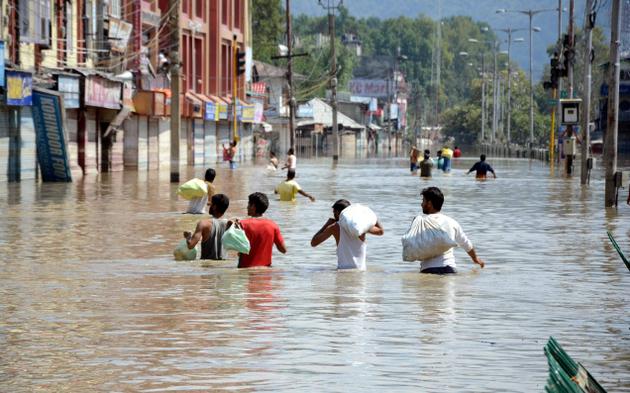
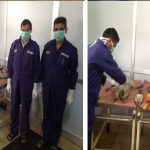

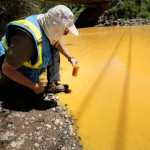





As always, the issue of the IndiaWilds newsletter is a treasure. I agree thoroughly about the cows. The Chennai flash flood reminded me of the Mumbai deluge when I walked 25 kilometers in rain and storm water. I watched the video on Harappa —it is thoughtfully created. I stopped at the dream machines and the ball head too…
Thanks for your kind words Umashankar! Interesting to know that you were caught by the Mumbai floods in 2005. That event has been a life shaping experience for some. I am sure a writer of your calibre would have got that story deeply etched in memory, if not already captured in words. We have to keep on reminding people that we can’t despise, ridicule and stamp our feet over nature, as we can’t stand Nature’s fury. Harappa stands a mute spectator to it.